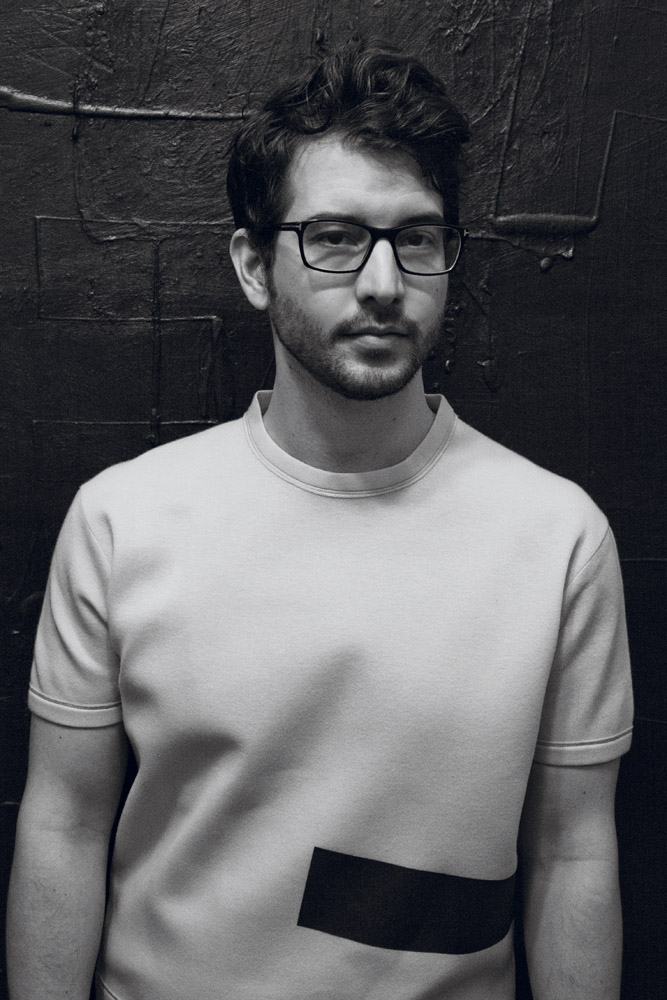Samuel Jablon
In the back of Samuel Jablon’s Bushwick, Brooklyn studio is a bright red leather couch with a pile of books stacked in front—collections from poets like Yuko Otomo, Bill Berkson, and Alice Notley. As it turns out, poetry is as much a part of Jablon’s practice as paint, exemplified by the artist’s freshly smeared fingerprints in purple, orange, and brown on the book covers. The 29-year-old Jablon certainly looks the part of a Brooklyn painter-poet. Bespectacled, unshaven, and a little tired, he’s in the thick of it on the night I visit him, putting the finishing touches on a two-gallery show in New York at Arts + Leisure and Freight + Volume set to open this month. “The last show was really exciting,” he says. That was in 2014. It was his first in New York, and shot through with euphoria, as breakouts tend to be. “With this show, though, it’s not just about making fun, beautiful paintings. It’s ‘What do you want to say?’ ”
Short verses with block letters painted in a slightly lilting freehand are his primary architecture, although they’re presented less as bits of text to be read than codes to be deciphered. The phrases “OLD WAYS DON’T OPEN NEW DOORS,” “EVERYTHING LIVING DIES,” and “WHAT A BEAUTIFUL TIME” are broken up, jumbled together, rendered without contrast or in extreme contrast, embedded with bits of glass or mirror. Instead of an object being observed or a sentence being read, there’s a necessary exchange between the two in a search for meaning. That, Jablon says, is where he wants the art to be.
One large painting, with heaps of acrylic paint and smashed glass fragments, had originally been gold. He sat with it for a couple of days, then painted the whole thing black. He says that it had been too easy to write off. Brevity implies stock phrasing, Hallmark sentimentality, and to read these phrases uninterrupted, or out loud, can seem pat. The thing is to let them linger and to compel your lingering.
For a long time, Jablon wrote poetry with the one hand and painted his abstractions with the other. In grad school he fused the two into a single practice, and he has been working in that mode ever since. His first show was ransom-note exuberant—blasts of color and geometry, the letters practically bedazzled. The new work is more confident and restrained. “More minimal,” he says, “but there are more layers, more depth to them.” And what has he decided to say? That, you’ll have to sort out on your own.







